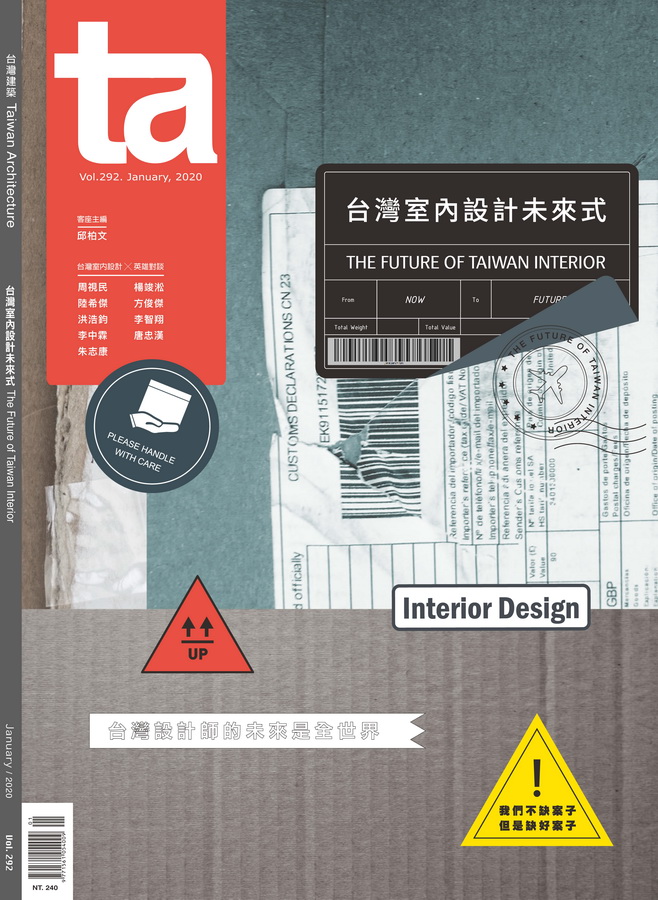邊境客廳Living Rooms at the Border
共好×設計 Design for the Common Good 台灣建築雜誌2022年6月 Vol.321

作品檔案2097
邊境客廳Living Rooms at the Border
團隊/Team:克魯茲+佛曼工作室與家屋組織協作/ Estudio Teddy CruZ + Fonna Forman in collaboration with Casa Familiar
網絡/社會經濟環境設計網絡/ SEED Network;
議題 Issue:都市韌性/ Urban Resilience
編輯/Editing:Shannon Turlington;翻譯/Translation:陳盈棻/Ying-Fen Chen
在房屋增建受到排他性土地使用分區管制的低收入社區,「邊境客廳」計畫透過小面積用地的設計,探索平價住宅與公共空間介面打造的可能性。此計畫由小尺度的社會基礎設施串連而成,創造出文化與經濟活動所需的空間。非營利家屋組織(Casa Familiar)和加州大學聖地牙哥分校共同規劃的平價住宅,即嵌於這樣的社會—空間支持系統中。此計畫將一座老教堂適度地再利用,轉型成社區劇場,結合戶外舞台,連結一系列小型的附加建築物,供家屋組織的活動使用,平價住宅則環繞在這個有社會、教育、文化功能的基礎設施四周,因應不同族群的需求與生活方式。
Living Rooms at the Border explores the interface between affordable housing and public space, focusing on small parcels in low-income neighborhoods, where incremental density is prohibited by current exclusionary zoning. The project is organized by a parcelsize social infrastructure, made of spaces for cultural and economic activity. Affordable housing is embedded within this socio-spatial system of support, co-curated between Casa Familiar and the University of California, San Diego (UCSD). The adaptive reuse of a historic church into a community theater with an outdoor stage anchors a series of small accessory buildings for Casa Familiar's social programming and an open-air civic classroom/pavilion. This social, educational, and cultural infrastructure is flanked by affordable housing that caters to different demographics and lifestyles.
理念
住宅政策與經濟上的進步,是推動平價住宅設計不可或缺的基礎,這包含「排他性土地使用分區政策」的轉型,以支持足夠的社會密度、過渡期的使用方式以及移民社區裡的共享經濟。造成平價住宅危機的一個因素,即為排他性土地使用分區,以及歧視性的補助架構,為了處理這些重要的議題,本計畫的推動者與社區夥伴們,不只專注於實體空間的設計,也制定跨部門的合作模型,以及非典型開發的財務分析。
Cause
No advances in affordable housing design can be accomplished without advances in housing policy and economy. This includes demanding transformations in exclusionary land-use and zoning policy, to support the social densities, transitional uses, and shared economies found in immigrant neighborhoods. One factor that contributes to the crisis of affordable housing is the conflict between exclusionary zoning and discriminatory subsidy structures. To address these critical issues, the authors and their community partners designed both the physical spaces and the protocols for inclusion, including the cross-sectorial collaborative models, and the economic proformas to advance communities as alternative developers of affordable housing.
方法
這個計畫以支持社區主導、漸進的小尺度都市開發模式,來進行城市的民主化,並反思平價住宅如何從個體的單元,轉成有關聯的社會體系。這樣的發展有賴於以都市為教室的教學工具,來組織對話和知識交流,輔以可以佐證的視覺系統,讓社區有能力參與複雜的都市政策生產過程。計畫推動者與家屋組織設計了一系列社區座談,透過健全的社區參與和實驗性都市教育的過程,讓社區議題得以被呈現、探討,並提升居民對於社會經濟政策的體認,也讓在地的非正式經濟,做為改變市政府住宅政策的基礎。
Method
This project champions community-led, incremental small-scale urban development to democratize the city, re-thinking affordable housing from autonomous units into relational social systems. This requires designing urban pedagogical tools to organize dialogues and knowledge exchanges, supported by evidentiary, visual systems to enable community access to the complexity of urban policy. The project emerged from a robust community engagement, organized through experimental urban pedagogical processes. The authors and Casa Familiar designed a series of community dialogues and forums, where community issues were presented and discussed to increase the community's awareness of existing social-economic policy and to advocate for how the community's own patterns of informal development can in fact provide the basis for transforming municipality housing policy.
影響
在不易描繪的社區動態中,這個計畫證明,嵌於社區的草根行動者,可以扮演重要中介,組織跨部門的聯繫,更使上位的資源與社區需求產生連結。計畫也同時提升移民社區作為社會經濟生產力的基地,挑戰都市化只將城市視為消費基地的邏輯。位於聖地牙哥與墨西哥蒂華納的交界處,是西半球最繁忙的交通通道,這個計畫呈現邊境社區不必然是犯罪與對立之處,反倒是都市與政治創造力的重鎮,推動以團結為導向的都市化進程。
Impact
The project produces tangible evidence that communityembedded, grassroots agencies are the mediators and translators of otherwise invisible neighborhood dynamics, curating cross-sectorial interfaces, and linking top-down resources to community needs. The project elevates immigrant neighborhoods as sites of socialeconomic productivity, challenging the logic of urbanization that see the city as a site of consumption. Located at the San Diego- Tijuana border, adjacent to the busiest land crossing in the Western hemisphere, the project presents border neighborhoods, not as sites of criminality and division, but as the epicenters of urban and political creativity, from which new solidaristic urbanization will unfold.
提示
此計畫屬於加州大學聖地牙哥分校「社區基地」的一環,串連聖地牙哥和墨西哥蒂華納交界區域的弱勢移民社區,其研究與教學活動是由大學和社區夥伴合作規劃。由家屋組織和加州大學聖地牙哥分校發起, 「UCSD-Case Familiar」社區基地是一個大學與社區夥伴關係發展的特殊模範,此計畫一邊將邊境社區知識與要項帶進大學研究,一邊也將大學的知識與研究工具帶進社區,提升兩者在政治和氣候行動上的能動性與生產力。
Takeaways
This project is part of the UCSD Community Stations, a network of field stations located in disadvantaged immigrant neighborhoods across the San Diego-Tijuana border region, where research and teaching are conducted collaboratively between university and community partners. Co-curated between Casa Familiar and UCSD, the UCSD-CASA Community Station is a unique model of longterm partnership bringing the knowledge and priorities of border communities into university research, and the knowledge and research tools of the university into border communities, to increase agency and capacity for political and climate action.
(完整作品內容請參考《台灣建築》2022年6月號,Vol.321)













